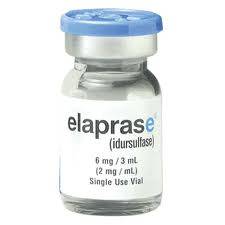Today, I'd like to highlight two promising methods to treat Hunter Syndrome.
Hematopoietic Stem Cell Transplantation
Hematopoietic Stem Cell Transplant (HSCT) therapy is the transplantation of healthy stem cells, which contain a working copy of the IDS gene, which is responsible for Iduronate-2-Sulfatase production, into the body of a patient with Hunter Syndrome.
These transplanted stem cells would then take root in the patient's body in a process called engraftment and then develop into other healthy blood cells which produce the enzyme I2S.
HSCT therapy is nothing new though, bone marrow transplants (A rich source of hematopoietic stem cells) have been a mainstay treatment for certain cancers such as leukemia for many years now.
Due to advances in surgical and treatment procedures, what was once considered a high risk operation is now gaining ground as a potential frontline response to genetic diseases like Hunter Syndrome
The advantages of HSCT therapy include
- Only one treatment is needed if engraftment is successful the first time
- Donated stem cells will differentiate into cells which continuously produce the enzyme I2S, which better mimics normal secretion by a healthy person
- These cells are not limited to areas with good blood circulation, therefore the enzyme will be able to access hard to reach places such as the brain or the joints
In addition, a study comparing the effectiveness of HSCT therapy and enzyme replacement therapy found that both were equally effective in restoring growth rates in young patients, meaning that HSCT therapy could potentially serve as an alternative form of treatment to enzyme replacement therapy at a fraction of the cost.
However, one of the major downsides to HSCT therapy is transplant associated mortality due to the immunosuppression of the patient during the course of the treatment as well as the associated risk of rejection of the transplant.
As of 2002, approximately 6% of patients who went through HSCT therapy did not survive the operation, making this a relatively high risk procedure reserved for treatment of diseases which have even higher rates of mortality.
As of 2002, approximately 6% of patients who went through HSCT therapy did not survive the operation, making this a relatively high risk procedure reserved for treatment of diseases which have even higher rates of mortality.
In the future, advances in medical technology and healthcare will likely further reduce the mortality rate associated with HSCT therapy, and thus see an increase in widespread usage of HSCT therapy to treat genetic diseases such as Hunter Syndrome.
Gene Therapy
In gene therapy, a working copy of the IDS gene must be administered to the patient, get to the cells that need repair, enter the cell and integrate the working copy of said gene into the X chromosome, which then is able to produce the enzyme normally.
This is normally done by engineering a virus or other carrier molecules called vectors to carry a functioning copy of the IDS gene.
The vector is then administered to the patient, where it then enters the cells carrying the defective IDS gene and replaces it with a working copy.
This would mean that a successful integration of a working copy of the IDS gene into the X chromosome of the patients cells would allow them to produce the enzyme I2S like a healthy person would.
The advantages of gene therapy are the same as those of HSCT therapy, since both restore the body's ability to produce the enzyme I2S naturally.
Gene therapy does have an edge over HSCT therapy as there is no need for immunosuppression throughout the procedure, meaning the patient is at less risk of being caught with his pants down by an opportunistic infection.
In addition, there is no risk of Graft versus Host Rejection, an extremely painful condition that is a potential side effect of any transplantation.
 |
| A basic diagram of gene therapy |
The tricky part is getting the gene to integrate with the chromosome in the first place, as it's possible for the inserted gene to not enter the chromosome but still produce the enzyme anyway.
This lack of integration is called transient expression, and as it suggests, only results in temporary improvements as the working gene is not passed down to the next generation of cells.
In addition, getting the gene into the right place in the chromosome is a problem in itself, as inserting the gene into the middle of another gene sequence will cause a whole host of other problems, such as the disabling of other genes or deactivating some cancer suppression genes, just to name a few.
Another potential problem is the cost associated with such therapies.
As gene therapy is still a fairly new field, more research is needed to develop new technologies and biopharmaceutical processes that will hopefully reduce the hefty price tag associated with such treatments.
To date, there is only one clinically approved gene therapy treatment (Glybera, used to treat lipoprotein lipase deficiency) and it comes with a whopping cost of US $1.6 million PER treatment, making it one of the most expensive therapies available today.
With the growth of the biomedical sector worldwide, I expect that the field of gene therapy will continue to grow as well, perhaps one day leading to a revolutionary discovery that would allow gene therapy to be widely available to people from all walks of life.
Thanks for sticking with me for this long, I hope I've been able to teach you at least a little about Hunter Syndrome!
Source:
http://www.researchgate.net/publication/264245057_Impact_of_Enzyme_Replacement_Therapy_and_Hematopoietic_Stem_Cell_Therapy_on_Growth_in_Patients_with_Hunter_Syndrome
http://www.citelighter.com/science/health/knowledgecards/bone-marrow-transplant
http://www.oncolink.org/treatment/article.cfm?c=15&id=323
http://www.citelighter.com/science/health/knowledgecards/bone-marrow-transplant
http://www.oncolink.org/treatment/article.cfm?c=15&id=323
http://www.haematologica.org/content/89/10/1238
http://www.bionews.org.uk/page_204696.asp
http://www.bionews.org.uk/page_204696.asp











